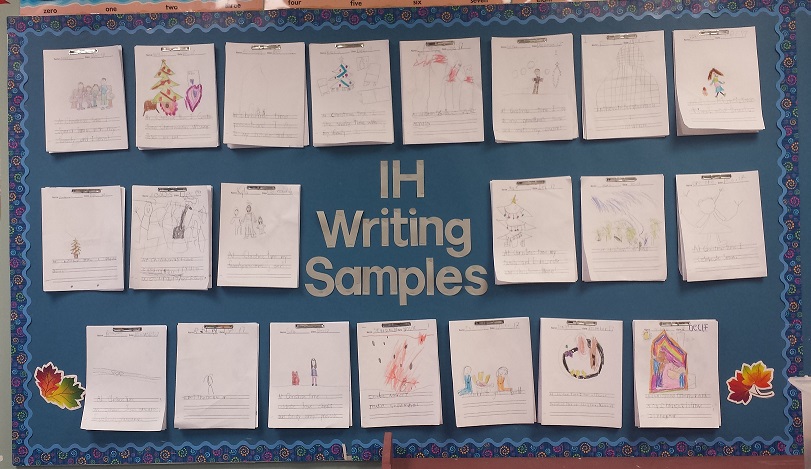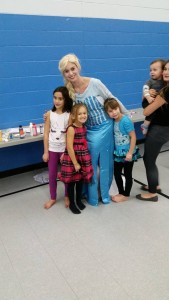Literacy is super important in helping develop students’ reading and writing abilities. In my teaching practice I believe it is important for the student’s to be creative, engaged, and challenged. Literacy is one of the most important skills to learn. It is a journey that keeps on going (even when you are an adult.) It is important to allow children to use their imaginations and this can be through drawing and/or words. It definitely varies through the grade levels as to the intensity of the writing/drawing ability, but I always remember too that children come with a wide range of abilities. In the practicums I was involved with, literacy was a big part of each day. Here are some literacy practices I want to incorporate into my classroom:
1.) Writing Wall Samples

I wish I could take full credit for this idea, but sadly I cannot. This idea is a great one that my CT uses. In her grade 1 classroom she sets time aside each month for students to write and draw a picture of what they are writing. Students are supposed to write on their own with no assisted help. They are supposed to show what they know and stretch out words as best as they can. Parents love this when they come and see the progression of the students’ writing abilities.
————————————————————————————————————————————————————————
2.) Daily 5
(Read to self, Read to someone, Listen to reading, Writing, and Word Work.)

Daily 5 is really great on giving options to students on how they want to develop their literacy skills. I would assign a few students to each category and during Daily 5, they will work on their assigned category. This would switch up weekly. This allows students to have the ability to try out and experiment with different areas. It allows for the student to be engaged while also learning fundamental literacy skills.
————————————————————————————————————————————————————————
3.) Word wall and booklet

It is important to have a word wall for students to be exposed to high frequency sight words that are commonly found. The older the grade, the more advanced the words become. It is great to have a list printed out of these words and have students have a little booklet they can have with these words cut out and glued into.
————————————————————————————————————————————————————————
4.) Small Group Reading and Sight Word Recognition

Readers are at different abilities and levels, and it is great to keep track of their reading abilities by performing frequent Running Records. Once you have figured this out, you can identify which students are needing additional help. You can take the struggling readers in these small groups and work on appropriate reading level books for them together. It is good to have sight words on cue cards too to go through each of them to increase the students’ ability to recognize words.
————————————————————————————————————————————————————————
5.) Novel Study for Advanced Readers

On the other reading spectrum, there will be students who are reading above grade level and are needing a challenge. It is great to have novel study questions and books ready for these students. A great series is the Tree House series.
———————————————————————————————————————————————————————-
6.) Journal Writing

It is important to have students write about their lives, interests, hobbies, and dreams. This allows the student to not only practice their writing and spelling abilities, it allows them to develop a sense of identity. Journal writing is a great keep sake when students grow older and look back. They will find out what things remained the same and the differences that were created when they read it at a later date.
———————————————————————————————————————————————————————-
7.) Story Writing Booklets

Creating booklets out of paper is a great way for students to practice their story writing abilities, and this could be used for any level. If students do not know how to write well at the beginning, they can use pictures to represent what their story is about. This is a great way to have students do a show-and-tell as well when they are finished.
———————————————————————————————————————————————————————-
8.) Drama
Drama is an important part to taking a child’s imagination and bringing it to life! Through story writing, group discussions, and group collaboration, the students will be able to come up with a way to act out their stories to the rest of the class. This helps with the child being in character and taking on other roles.
